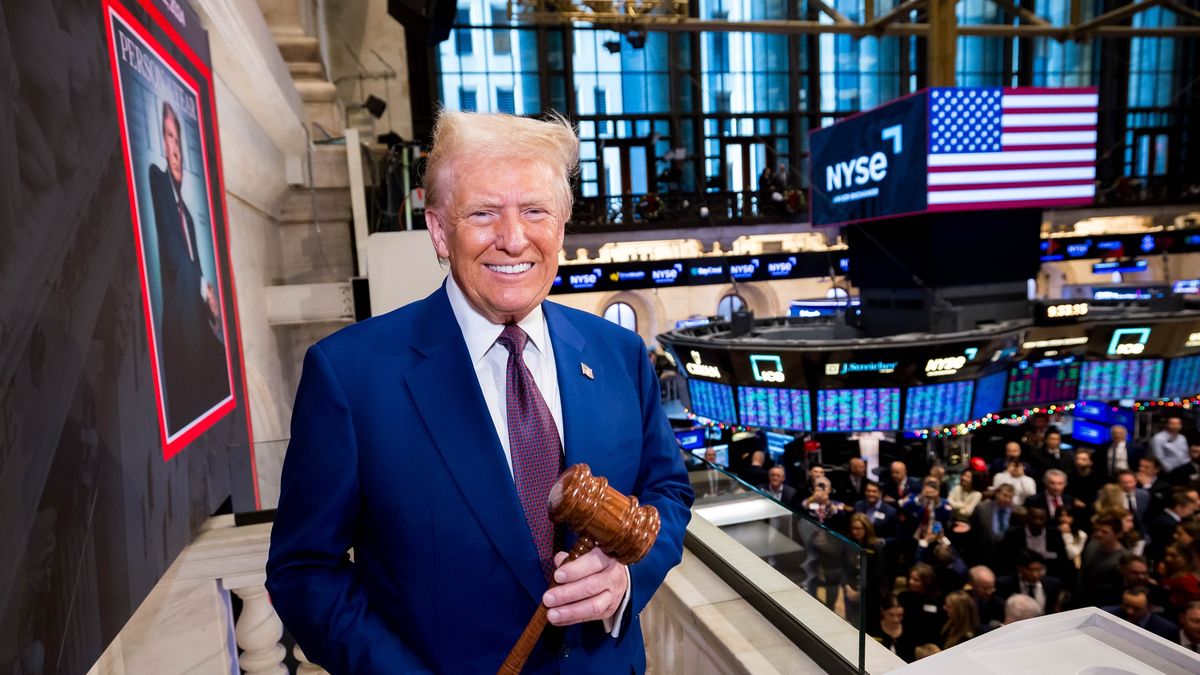The United States resists the recession. GDP fell 0.3% in the first quarter, but the expansion did not stop. The Final sales 2.5%grew. Those aimed at the internal private sector accelerated from 2.9% to 3%. He Personal income Available increased 2.7%. And a depressed consumer, according to trusted surveys, did not reduce his expense: +1.8%. The investment, Encouraged by non -repeatable factors, it shot: 7.8%.
It is not the first occasion in which the product stooked, and the economy grows driven by an indefatigable demand. This happened in the initial half of 2022, When the GDP It declined 1% in the first quarter and sank again (preliminary, then corrected) in the second. The so -called “technical recession” then proved to be just a false alarm. As is known, there was no sustained contraction of the activity, spending or employment or in 2022 or in 2023 despite all forecasts.
Is the story repeated? A broad look puts it in doubt. He labor market He suggests that. In April, 177 thousand net jobs were created, exceeding the most optimistic of forecasts. Recession? Where? Since the year began, the United States fixes them to add about 150 thousand new net posts average month by month. Despite the uncertainty caused by the Trump administration policies, and the tenacious pruning of federal public jobs carried out by the office Doge that leads Elon Musk. The soft data of the economy melts since January. The hard data does not give the arm to twist. It runs serious danger, but copes.
That said, it is convenient to take the information of the national accounts with tweezers. The Trump government is almost a force of nature capable of producing huge changes whose consequences cannot be calibrated yet. The tariff saga, pre -announced the four winds by the White House, motivated a spectacular jump of trimester imports: 41.3% (equivalent to 5 points of GDP). Imports of physical goods climbed 50.9%. This is a demand exacerbated by the will to anticipate to the validity of the largest taxes (“front running”). It is not, by the way, a behavior that will be repeated. On the contrary, it will be reversed with similar abruptness.
In fact, the prohibitive tariffs that Trump applied to China in April causes a vertical fall of shipments from that country. And Beijing reprisals closed the circle of a virtual commercial embargo. All for an indeterminate time. Thus, the reality has already turned a complete bell, which will only be reflected in the figures of the second quarter.
A fast transition phase is navigated. Policies changed drastically with Trump. However, the results are still explained mostly by the inertia inherited from Biden. There is no recession, not yet, but, a cooling is noticed. And a very high risk of accident. The consumer- who put the economy on the shoulder in 2022 and 2023 when the Fed raised the interest rates to it- is again the key actor. If your feeling is measured, it already declined at levels that were always associated with a recession, except in 2022. If your expense is measured, as stated, it increased 1.8% in the first quarter. But the previous quarter came from 4%. And 2.8% in all 2024. It is the lowest record since the second quarter of 2023. And it is recorded when the personal income available grew 2.7%, the highest threshold of the last four quarters.
Nevertheless, The most important fact to keep in mind is that the consumer anticipated purchases to avoid the highest tariffs and their transfer at prices. However, The consumption of goods, which had increased 6.2% the previous quarter, slowed to 0.5%. And that of durable goods sank 3.4% despite the “front running.” The deep distrust of the consumer about his personal future is the Achilles heel of the cycle. If the labor market loses brivers, and drags income, vulnerability will be impossible to overcome.
Wall Street prefers to believe that the recession may be avoidedand removed her from her prices. Since Trump was forced to recalculate the rise of reciprocal tariffs, today in pause mode (until July 9), the bag progresses roughly from the reigning pessimism. The S&P 500, which was on the edge of the Bear market, climbed 18% from its minimums and already recovered everything lost from the Fiasco of the Day of Liberation. Accumulates a firch of nine positive wheels, which did not happen since 2004. Sell in May? Foreign institutions and investors sold strong in April. The Hedge Funds maintain considerable positions. It is retail investors who bought the crouched, poured about 40 billion dollars into shares in April, and push the rise.
The relief rally that began with the setback of Trump On April 9 it is made with the presentation of very good corporate balances. But, above all, with the idea that finished frustrated saga of tariffs will soon replace it a collection of commercial agreements. And, ultimately, also the commercial Pax with China.
The retail investor wants to believe that the recession will be avoided and the good times will return. Wait, yes, a Fed help in June – the first low rate of the Trump cycle – and perhaps two others before the end of the year. If the bag is right, and the recession economy is not clear, it is not clear why the Fed should interfere. Today your priority is to see and wait for inflation expectations not to be disagree Given, among other factors, the effective increase in tariffs (such as brand new universal step of 10% that stands standing). If there is no transfer at prices, the Fed will breathe relieved. But then the tariff increase will have been faced by companies, instead of the consumer, with a reduction of their gain margins. And that temporary bill will come with the next balances. Companies will have to adjust. The cost of the tariff is not only the amount paid, but also the dead weight of distortion that will force to modify production and logistics chains. Or reduce their expenses (and schools) and their activity, or gradually correct their prices. Or, most likely, they rehearse a combination. Time will say. Wall Street does not ignore it, but bets that trade agreements occur first and leave the resolution of these thorns for later.
Source: Ambito




